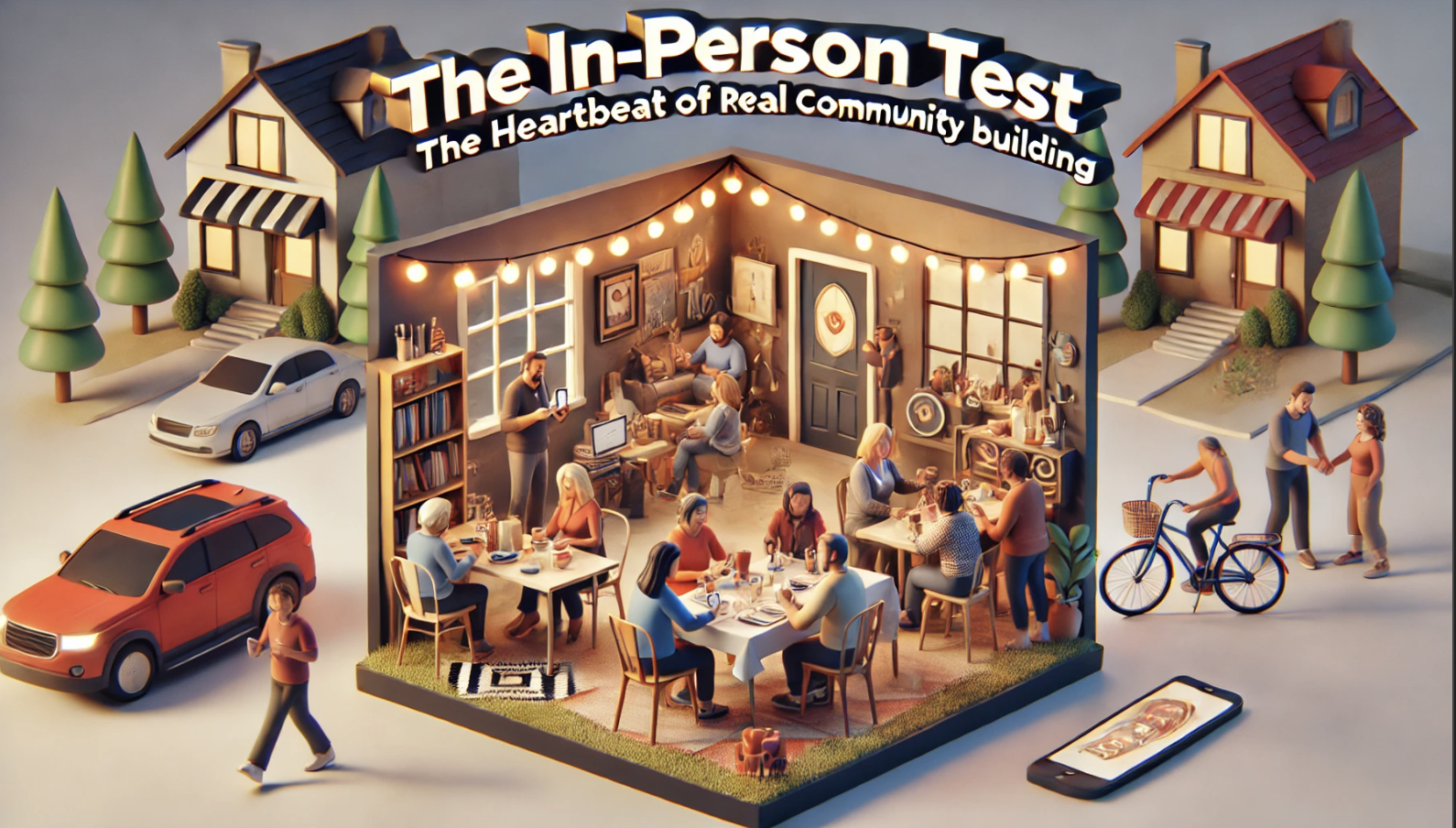The In-Person Community Test
A real community needs more than just a virtual space; it needs real, tangible connections between people. Practice this skill IRL so you can be better online with your community work.

Setting up an online community is deceptively easy. You pick your platform, set your rules, send out invites, and voila – you have a community.
Or do you?
The truth is, a real community needs more than just a virtual space; it needs real, tangible connections between people.
If you're deeply interested in building a community, the most crucial step is to avoid online altogether.
Put away the computer, pick up the phone if you must, but most importantly, get out there and engage with people face-to-face.
The Problem with Digital-Only Communities
Relying solely on online interactions to build your community can lead to a disconnected and impersonal experience. Sure, it's convenient, but it lacks the depth and authenticity that comes from in-person interactions.
Without real-life connections, your community might struggle to develop trust, empathy, and a genuine sense of belonging.
People may feel isolated despite being 'connected,' leading to a superficial and fragile community structure.
The Power of Face-to-Face Interaction
There’s something irreplaceable about meeting people in person. It’s in the eye contact, the body language, and the spontaneous conversations. This is where real bonds are formed.
Face-to-face interactions force you to ask questions and facilitate conversations in person, which is far more difficult than online, but much more authentic.
Developing this skill set will pay off massively when you move online, as you'll be better equipped to create meaningful dialogue and connection.
Creating Shared Experiences
Shared experiences are the glue that holds communities together.
When you organize activities in person, you'll start to notice that people have different interests, and some things are harder to coordinate than others. Some activities are easier to get people together for, and you'll begin to understand how to curate events that have meaning for all, even if it's not something everyone initially asked for.
Developing this ability to create inclusive and engaging experiences is invaluable for community building.
Building Empathy and Understanding
In-person interactions bring a level of stress and effort that is an integral part of the community experience – and it almost non-existent online.
Hosting events and participating in face-to-face meetings allows you to build relationships with the people who show up. It helps you understand the different stakeholders and what it means to be a host and how to do so effectively.
This process deepens your empathy and understanding of your community members. You'll build better from the start, dramatically increasing the odds of a better event and a more cohesive group.
The Essence of True Community
When you make the effort to meet people in real life, you create a community that’s resilient, compassionate, and deeply connected. This is the kind of community that not only enriches the lives of its members but also has the power to make a positive impact on the wider world.
If you are thinking of taking the In Person Test, here's a quick list to get you started!
Steps to Take
- Close Your Laptop: Disconnect from the digital world to focus on real-life interactions.
- Brainstorm Ideas: Think of fun activities or gatherings for your local friends, neighbors, etc. Choose one.
- Figure Out Time and Place: Decide on the best time and place to host your event.
- Start a Group Chat or Drop Off Notes: Invite people to join in the fun through a group chat or by leaving notes at your neighbors' homes.
- Manage Replies Like a Boss: Welcome those who can attend and assure others there will be a next time.
- Plan One Unique Thing: Add a special touch to your event, like a unique appetizer, funky punch, or themed music. Be creative!
- Host the Event: Have fun and engage with your guests.
- Capture Lessons Learned: Reflect on what went well and what could be improved.
- Thank Your Friends: Show gratitude and ask if they’d like to do it again.
- Plot Online Community Domination: Use your in-person experiences to strengthen your online community.
